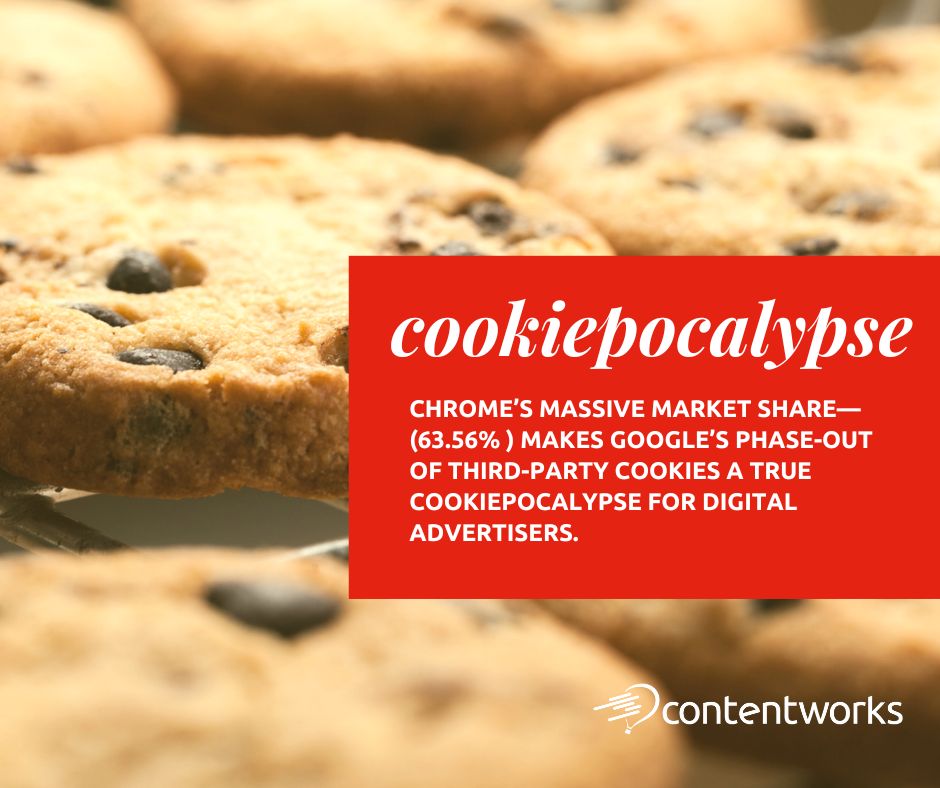Finance Brands Can Benefit From Google’s Third-Party Cookie Ban.
Unless you’ve been living offline, you will know that Google is planning to roll out a 3rd-party cookie ban. Google’s latest update was slated to complete in 2025. But smart marketers can do more than survive the change, they actually thrive. And if you’re a regulated financial firm, then thanks to stringent compliance policies, you’re probably in a great position to benefit from the ‘cookieapocalypse’. Let’s look at marketing without cookies and what actions you should be taking.

Why Cookies Matter-ed
3rd-party cookies mean brands can track user behaviour across the web. This allows them to better understand potential customers and create more personalised, timely ads. By taking away their cookies, advertisers are losing a crucial tool that helps them measure and better target their customers. However, as author Robery Burney said “Every obstacle is a gift, every problem is an opportunity for growth”. For financial services firms, and actually most other brands, the opportunity comes in the shape of first-party and zero-party data. We think this could be a good thing in the age of marketing without cookies.
1st-Party Data – Your New BFF
Marketing experts consider first-party data as the golden egg to understanding your customer-base. This is the information you collect from your customers when they interact with your channels: your website, social media, app and trading platform. What they buy/trade, when, and how much. Take that a step further and combine it with zero-party data – the information you receive from polls, surveys and customer feedback, and you have even more meaningful and reliable insights into your audience.
Quick Tips to Leverage 1st-Party Data
Invest in Data Collection
– Optimising websites and apps to gather data on user behaviour, preferences, and purchase history
– Introduce a loyalty programme that is set up to collect additional and even qualitative data
Create a first-party data policy
– Ensure your data is efficient, convenient to your users, and gathered with consent
– Combine the individual’s data across your organisation and be sure that all departments have access to it
– Develop persona profiles to create ultra-personalised experiences
– Feed the data across all your marketing activities to optimise acquisition, onboarding and retention
Contextual Advertising – Oh Hello!
Instead of tracking all users, contextual advertising targets users based on what they are browsing. For example, showing someone a forex ad while they are browsing the exchange rate for EUR/USD.
- Understand the importance of content – leverage AI web tools to understand the content of web pages and place contextually relevant ads. Create dynamic ad creatives that fit into your predefined contexts. Understand your audience to create engaging ads
- Research publishers to better understand their audience and context.
Profiling Your Audience
There is nothing new about creating client personas but every few years a new word comes along that pretty much means the same thing. The current iteration is ‘Identity Solutions’. This creates a profile of how users behave across multiple devices and touch-points. Today this means doing so in a compliant, GDPR-friendly way. Your martech stack needs to be able to handle user identities securely and with consent. It needs to be able to follow your client’s interactions with you across devices to give you a 360-degree customer view.
All this has to be done ethically and transparently. This is no longer a ‘nice-have’ but a ‘must-be’. Financial services brands have even greater pressure than ever to ensure trust with their client base and compliance with their regulators.
What the floc is FloC?
Google’s Federated Learning of Cohorts (FloC) puts users into groups (or cohorts) based on their browsing behaviour. Once considered the replacement to understanding user behaviour this approach is now giving way to Topics and Shared Audiences.
According to Google’s Privacy Sandbox, FloC, Topics and Shared Audiences are all tools that brands can use to target ads. While FloC groups targets users with similar browsing behaviour, Topics assigns each user a set of topics based on their browsing history. Meanwhile Shared Audiences allow you to share your audience lists anonymously.
Can I Still Retarget Customers?
The answer is yes. You will be more reliant on ad platforms and the features they currently have, or are planning to implement. Facebook Conversions API can send data of what visitors do directly to Facebook. No third party cookies involved and it allows you to retarget visitors with ads.
The Conversions API is designed to create a connection between an advertiser’s marketing data (such as website events, app events, business messaging events and offline conversions) from an advertiser’s server, website platform, mobile app, or CRM to Meta systems that optimize ad targeting, decrease cost per result and measure outcomes.
Shine the Light and Succeed
The end of the year is fast approaching and advertisers need to be implementing the above already. Change is inevitable and a great opportunity for creating a more transparent, trusted brand. For some financial services firms or forex brokers this may mean re-evaluating your mission. And we’re not talking about the lovely mission statement you put out to your clients, we mean the absolute reason for why you are here and doing business.
Your communication needs to be clear and it needs to understand your audience even more than ever. Putting privacy first shows respect of your clients, to your clients. Ensure your data collection practices are GDPR and CCPA compliant, and that your users have control over their personal data.
Where To Get Started
All these changes may seem a little overwhelming. You might not have the inhouse expertise to understand how to deal with them, or your team needs extra support implementing these changes. That’s where Contentworks can step in. From marketing strategies to execution of performance marketing, content and client funnels, we’ve helped countless financial services brands succeed.
Let’s get you started with a free Zoom.
